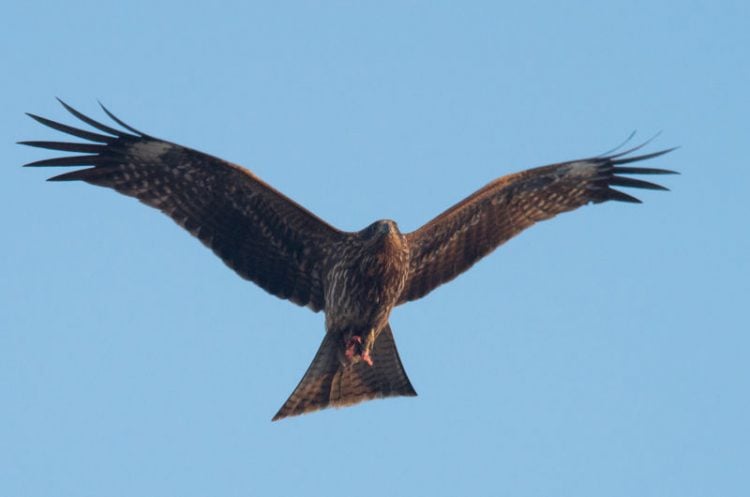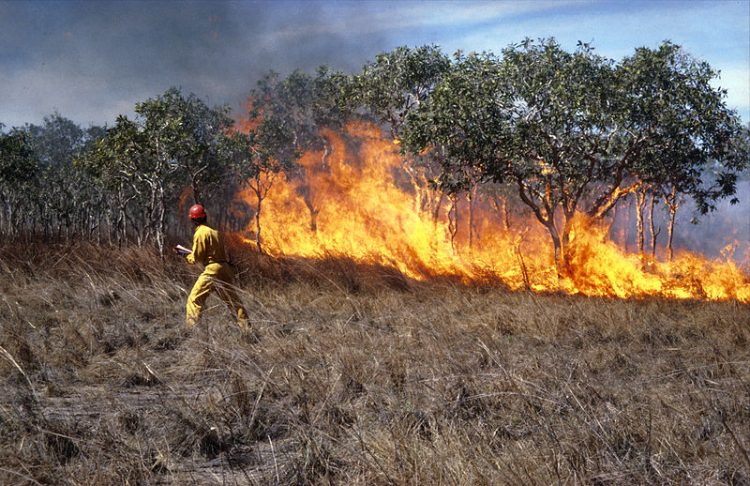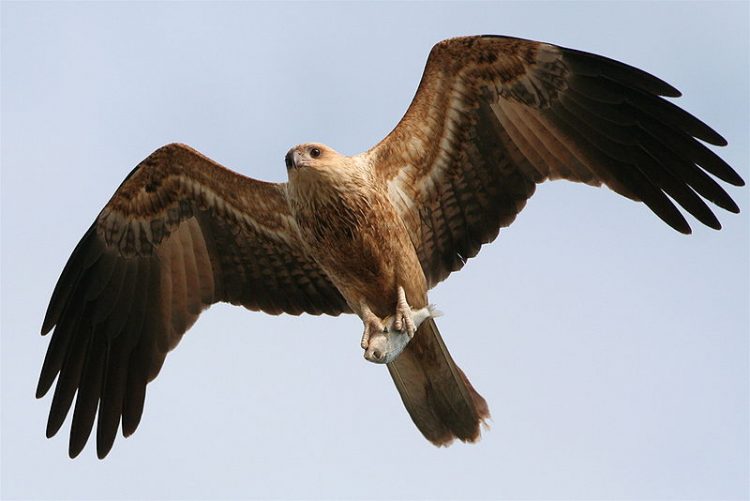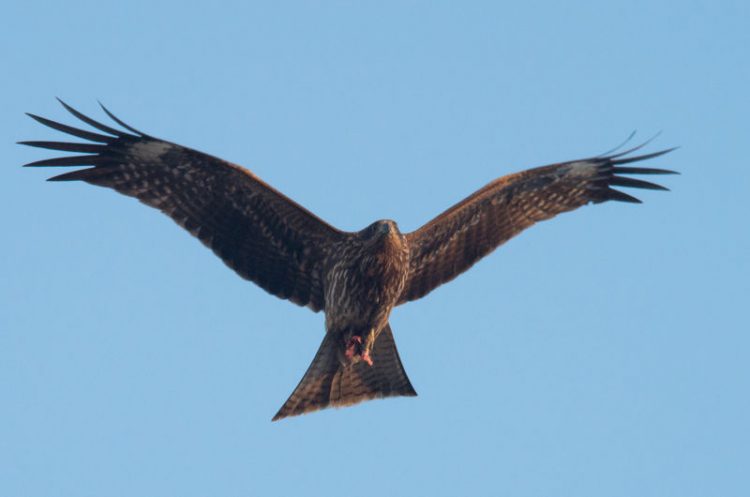According to a research paper published recently in the Journal of Ethnobiology, several Australian birds of prey have the habit of starting wildfires for the soul purpose of flushing out prey from the blazing grasslands. Interestingly, aboriginals have known about this for over 40,000 years and even have a name for the fire-wielding birds – “firehawks”.
Australia’s dry climate makes it prone to wildfires. Lightnings and human activities are considered the main causes, but according to a recently-published research paper, birds may sometimes have a part to play as well. Raptors like the black kite (Milvus migrans), whistling kite (Haliastur sphenurus), and the brown falcon (Falco berigora) can allegedly start fires in the continent’s 730,000 square miles of savanna by dropping burning sticks in the dry grass to flush out prey like insects, reptiles and small mammals. What’s even more remarkable is that they seem to be doing it on purpose.

Photo: nubobo/Flickr
Ornithologists have long known that birds of prey thrive in wildfire-prone regions. As small birds, lizards and insects emerge from the grasslands in their flight from the approaching blaze, birds of prey just swoop in and feast on them. What they didn’t know, however, is that the raptors can apparently cause the fire or spread them to other areas to bring their prey out of hiding.
“Black kites and brown falcons come to these fronts because it is just literally a killing frenzy,” Australian ornithologist and co-author of the recent research paper, Bob Gosford, said in an interview last year. “It’s a feeding frenzy, because out of these grasslands come small birds, lizards, insects, everything fleeing the front of the fire.”
Gosford became intrigued about the firehawks behavior after a reading a passage from the 1964 book, I, the Aboriginal, an autobiography of Waipuldanya Phillip Roberts: “I have seen a hawk pick up a smouldering stick in its claws and drop it in a fresh patch of dry grass half a mile away, then wait with its mates for the mad exodus of scorched and frightened rodents and reptiles. When that area was burnt out, the process was repeated elsewhere.”

Photo: CSIRO
And while the Australian ornithologist has yet to witness this behavior first hand, some of the co-authors of the paper already have. Dick Eussen, a veteran firefighter in the Northern Territory, recounts the events of a day he spent putting out fires in the deep outback. Just when he thought he and his colleagues had the fire beat, he saw a whistling kite carrying a burning twig in its talons, and dropping it in the grass, 20 meters ahead of him. That started another blaze. Eussen writes that that day he had to put out seven other flare-ups, all caused by the raptors and their burning twigs.
“We’re not discovering anything,” co-author Marc Bonta, a geographer at Penn State University, told National Geographic. “Most of the data that we’ve worked with is collaborative with Aboriginal peoples… They’ve known this for probably 40,000 years or more.”
Although many scientists and Aboriginal people have observed the behavior firsthand, there does not yet exist any usable footage of the firehawks in actions. Gosford has searched historical records for years, compiling reports of the fire-spreading birds and has interviewed several eye-witnesses. However, he has not succeeded in finding a single photograph or video of the birds carrying fiery twigs. He and his colleagues chalk this up, in part, to the dangers of attempting scientific research or observation at the edge of a wildfire. They have solicited the public for photos, and they hope to document the behavior in the field later this year, by studying a series of controlled burns administered by firefighters.

Photo: Athena Ferreira/Wikipedia
“The more word gets out on this, the better,” said Bonta said. “It’s only a matter of time.”













